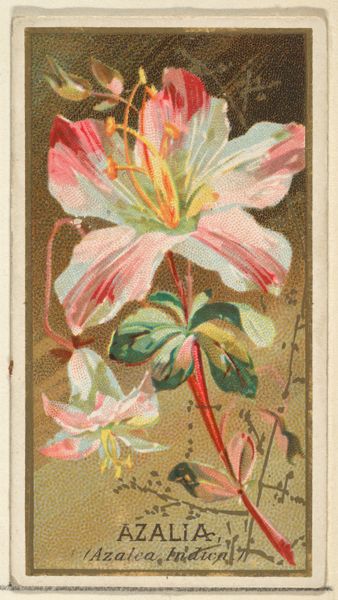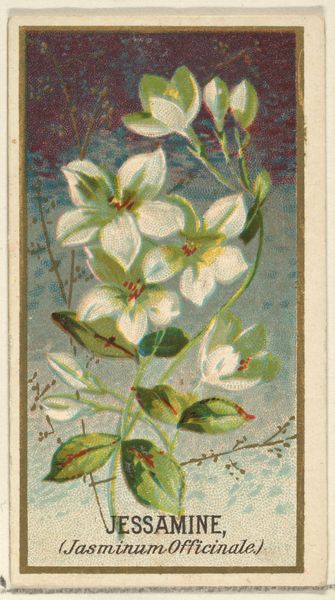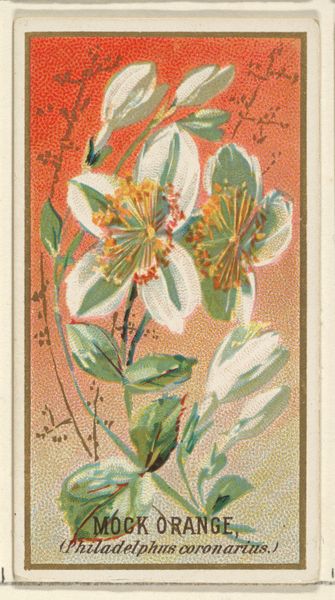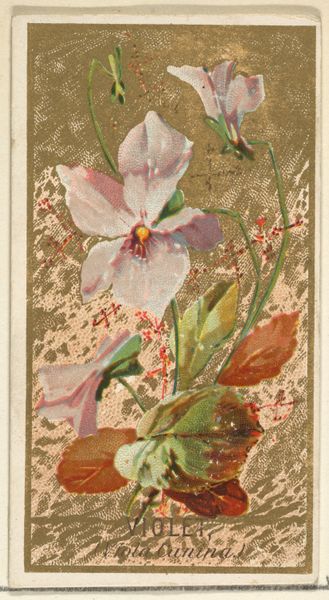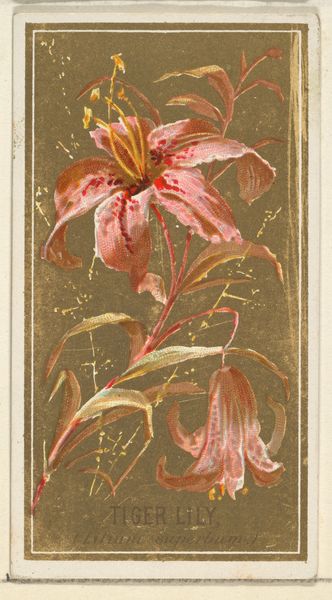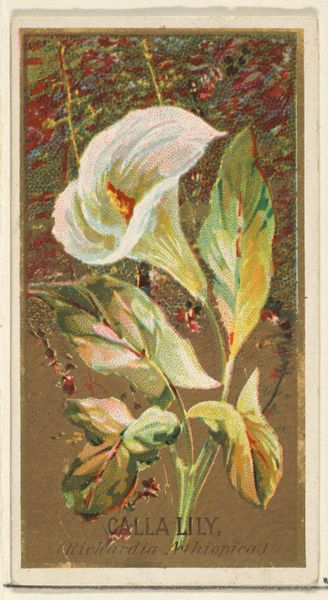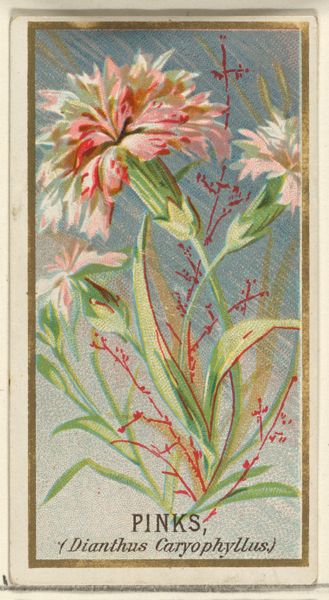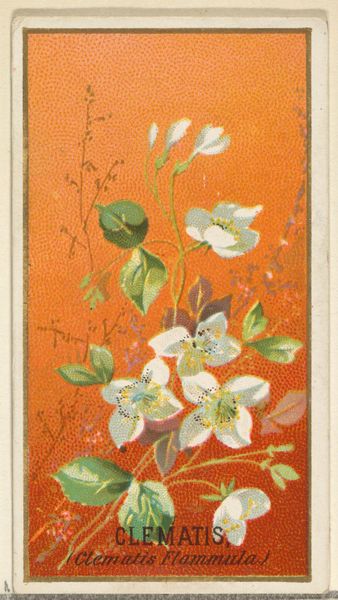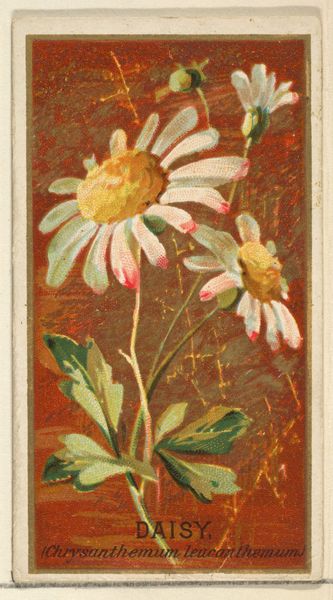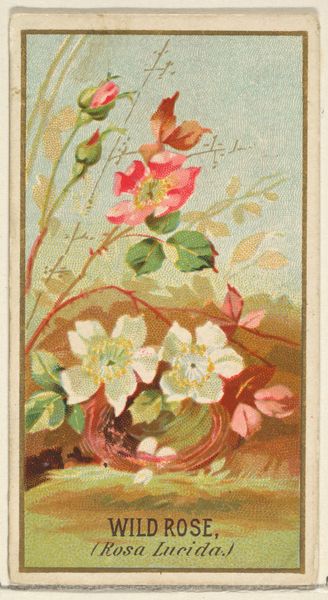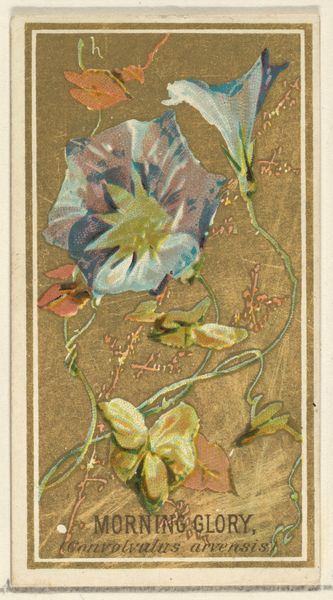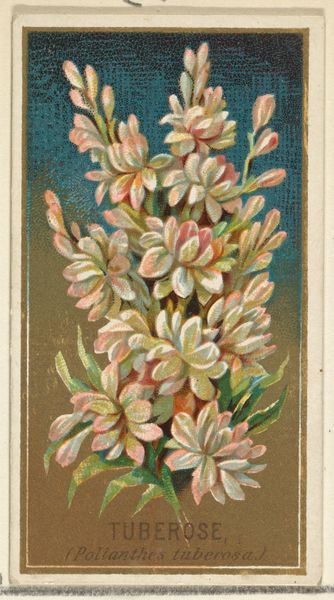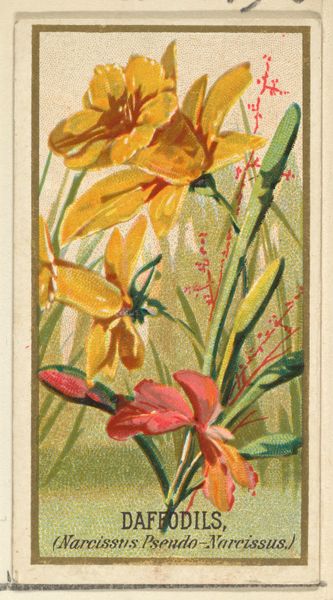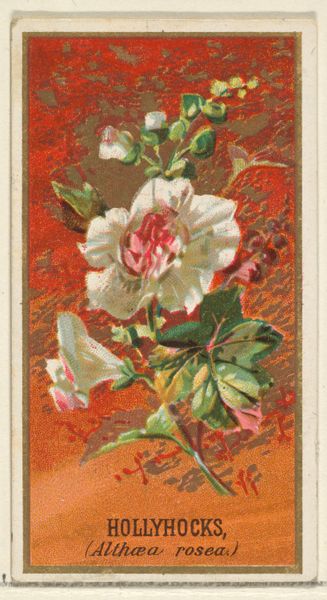
Magnolia (Magnolia Soulangeana), from the Flowers series for Old Judge Cigarettes 1890
0:00
0:00
drawing, print, watercolor
#
drawing
# print
#
impressionism
#
flower
#
watercolor
#
botanical art
#
watercolor
Dimensions: sheet: 2 3/4 x 1 1/2 in. (7 x 3.8 cm)
Copyright: Public Domain
Editor: So, this is "Magnolia (Magnolia Soulangeana)" from the "Flowers" series for Old Judge Cigarettes, made around 1890 by Goodwin & Company. It's a watercolor print – really delicate and pretty. What I find most striking is the framing of such natural beauty within an advertisement; how do you interpret that contrast? Curator: That tension between art and commerce is precisely where this image gains complexity. Consider the late 19th century: rapid industrialization, urbanization, and the rise of consumer culture. Flowers, often coded as feminine, become commodities, subtly aligning smoking with notions of beauty and leisure that target women. Where does that association leave us when contextualized with the damaging effects of nicotine consumption? Editor: Interesting! I hadn't considered that flowers were particularly associated with women at that time, but that totally makes sense. So, in that light, the image is more than just botanical art, it is almost propaganda? Curator: Precisely. Advertising then, like now, utilizes cultural narratives to shape desire. By appropriating the delicate beauty of a magnolia, the cigarette company attempts to neutralize the potential stigma associated with smoking. Now, think about the cultural symbolism of magnolias – purity, nobility – does this context change how we understand that symbolism, given the advertisement's intent? Editor: I think it definitely complicates it. I usually see magnolias and just think of Southern elegance and beauty, but in this context, that elegance is being used to sell something potentially harmful. It definitely changes my perspective on the image and cigarette advertisements as a whole. Curator: Exactly, and recognizing that interplay, the hidden persuasive language, arms us to engage critically with advertising images. This simple flower opens up a larger understanding of power, gender, and persuasion in visual culture. Editor: I am taking notes—I hadn’t considered the cultural context behind the advertisement until now! Curator: It’s those layered meanings that truly enrich our understanding and the ways art speaks across time.
Comments
No comments
Be the first to comment and join the conversation on the ultimate creative platform.
